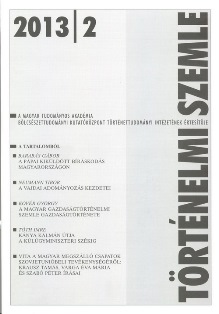„…hogy az lengyel király általa lenne köztek valami békissíg”. Az 1530. évi poznańi tárgyalások anatómiája
„… so that the king of Poland may do some kind of peace between you” The Anatomy of the Talks of Poznań in 1530
Author(s): Péter KaszaSubject(s): History
Published by: Magyar Tudományos Akadémia Bölcsészettudományi Kutatóközpont Történettudományi Intézet
Summary/Abstract: In 1530 the occasion first presented itself, after three years of civil war, for the two rival kings of Hungary, Ferdinand of Habsburg and János Szapolyai, to settle the disputed issue of the rule over the kingdom through negotiation. The necessity of negotiating was raised by the Polish diplomacy, which had traditionally tried to mediate between the two parties, and gained for the action the support of George, duke of Saxony, who was the brother-in law of king Sigismund of Poland. After protracted diplomatic preparations and several prorogations, the parties finally came together in the Polish town of Poznań. Although the Polish-Saxon diplomacy aimed at a final peace treaty, or at least a one-yearlong truce during which the preparations for the final agreement would be made, nothing of the sort appeared on the horizon after several weeks. Thus the talks were cut short in November apparently without any result, while the troops of Ferdinand lay siege to the castle of Buda. Yet the real importance of the talks of Poznań resided in the fact that the negotiations which started after the failure of the siege of Buda, again with Polish mediation, could lead within a few days to the three-month-long truce, signed in January 1531 at Visegrád, precisely because the parties did not have to elaborate a new agreement but simply to ratify the articles settled previously at Poznań. Although the peace treaty between Szapolyai and Ferdinand was only signed eight years later at Várad, diplomatic relationship remained constant between the parties after Poznań. The present study examines the antecedents, course and consequences of these negotiations, neglected by both contemporary historical works and modern scholarly analyses, on the basis of the two major groups of sources: on the one hand, the documents preserved in theHungarica and Polonica Collections of the Austrian National Archives (ÖStA HHStA), and, on the other, the Polish diplomatic material contained in volume XII of the Acta Tomiciana.
Journal: Történelmi Szemle
- Issue Year: 2013
- Issue No: 02
- Page Range: 271-289
- Page Count: 19
- Language: Hungarian

